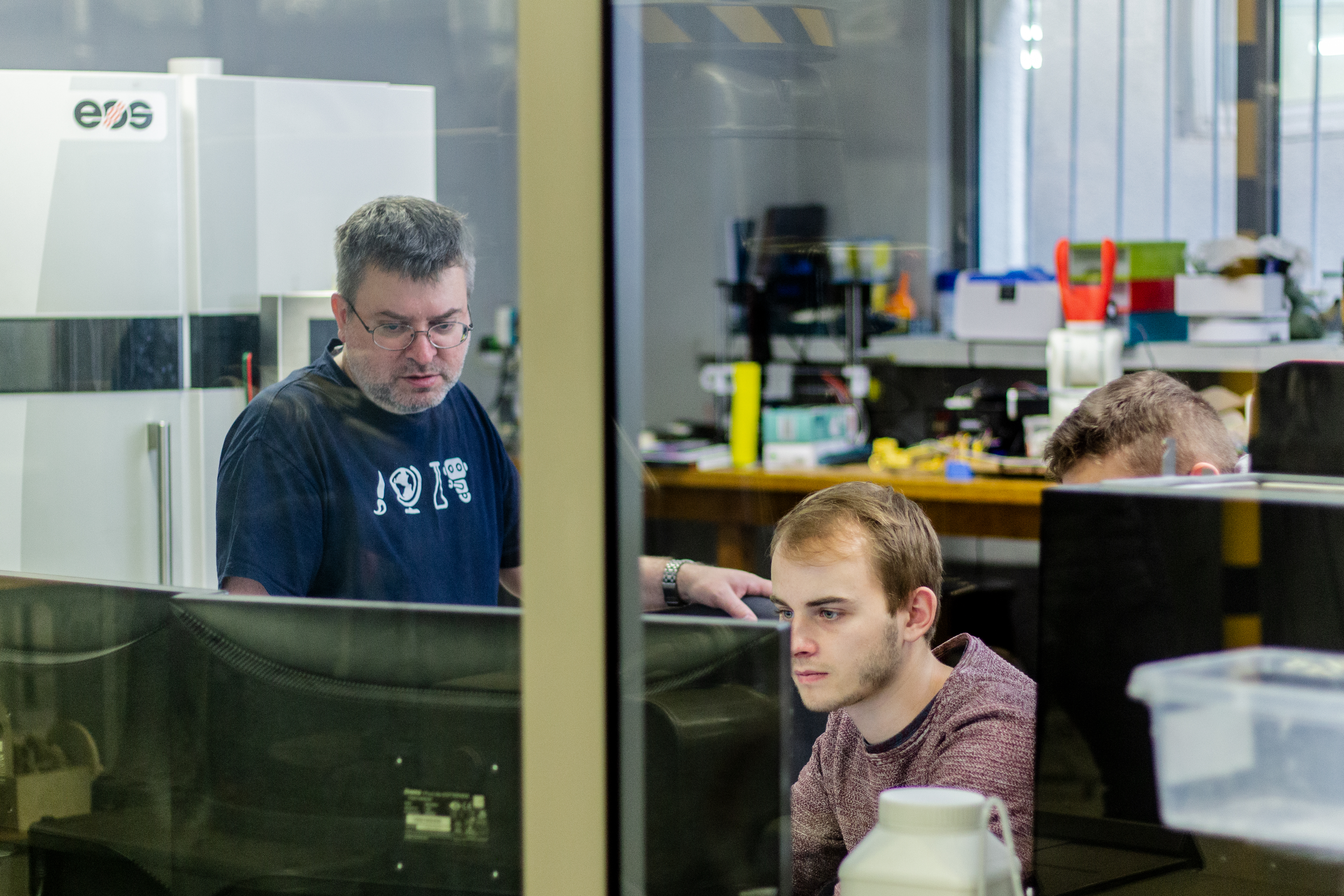“We are using the big EOS SLS 3D printer for a long time and we wanted to compare it with Sinterit Lisa, check the possibilities of it -says Piotr Dudek. In SLS technology every detail counts. The temperature of the printing chamber, powder distribution system, heating or laser moving mechanism are very precise and important features. We wanted to test if Sinterit’s device is the valuable solution.” – adds Dudek.
Piotr Dudek’s team outlines the impressive print volume as the main advantage of EOS SLS 3D Printer. As they said, big parts can be printed at once using big size 3D Printing systems such as EOS.
Speaking of Sinterit Lisa, the first advantage put forward is the gantry system of the 3D printer that can be pre-calibrated, which means that after taking it out of the box, the user will not need to spend days on adjustments.
As far as materials are concerned, AGH University puts forward the fact that, as a university, it is not economical for them to print parts separately on a big printer. Surprisingly, the use of materials for a small SLS 3D Printer turns out to be a cheaper solution to print a lot of different models for a large number of students. Indeed, according to the researchers, it is possible to use as little as one or two liters of the powder to start printing.
Piotr Dudek’s team points out some interesting points regarding small SLS 3D Printing systems but their comparison also shows some limitations. Small SLS 3D Printing systems are definitely less expensive than bigger SLS machines but their price comes with a reason. The researchers only pointed out the impressive printing volume as the main advantage of big SLS printers but did not compare the quality of two parts that have been printed on both types of systems, nor the printing speed of each system.
Moreover, it goes without saying that purchasing an industrial 3D printing system is a high-risk investment compared to a small SLS 3D Printing system but the profitability that the user expects and the way he will use it are a few reasons that can justify each purchase.
So, in our opinion, comparing two types of SLS 3D Printing systems requires well-defined comparison criteria in the first place…and criteria used by AGH University of Science and Technology researchers are not enough to determine the performance of each technology.
If you use both a big SLS 3D Printing system and a small 3D Printing system, feel free to share your point of view regarding the manufacturing process and the printing quality of each system.
You can now post free of charge job opportunities in the AM Industry on 3D ADEPT Media.
For further information about 3D Printing, follow us on our social networks and subscribe to our newsletter!
Would you like to be featured in the next issue of our digital magazine? Send us an email at contact@3dadept.com






